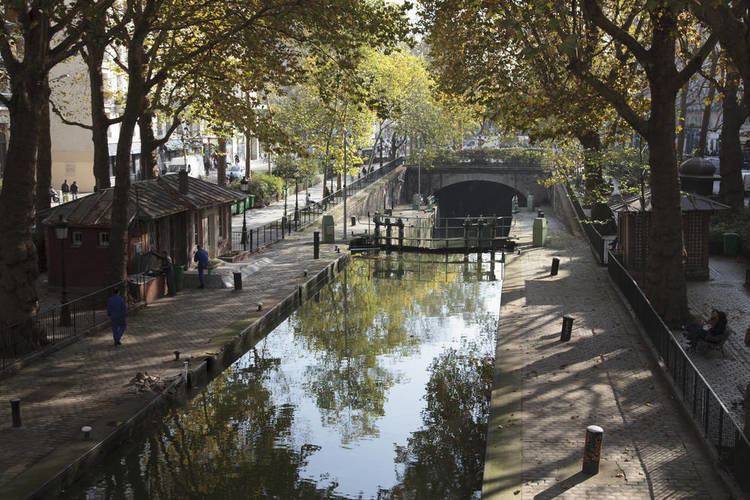 | ||
Bridges Pont tournant de la rue Dieu, passerelle des Douanes, passerelle Alibert Similar Parc des Buttes Chaumont, Île Saint‑Louis, Le Marais, Île de la Cité, Belleville - Paris | ||
Hidden treasures of paris canal saint martin discovered
The Canal Saint-Martin is a 4.5 km long canal in Paris. It connects the Canal de l'Ourcq to the river Seine and runs underground between Bastille (Paris Métro) and République (Paris Métro). It is drained and cleaned every 10-15 years, uncovering tonnage of garbage and treasure alike.
Contents
- Hidden treasures of paris canal saint martin discovered
- Map of Canal Saint Martin Paris France
- Coins catfish bikes and bottles the treasures of paris canal saint martin
- History
- Geography
- Tourism
- Mtro Stations
- Art
- Appearances in film and television
- Music
- References
Map of Canal Saint-Martin, Paris, France
Coins catfish bikes and bottles the treasures of paris canal saint martin
History
Construction of the canal was ordered by Napoleon I in 1802, in order to create an artificial waterway for supplying Paris with fresh water to support a growing population and to help avoid diseases such as dysentery and cholera.
Gaspard de Chabrol, prefect of Paris, proposed building a canal from the Ourcq River (starting 100 km northeast of Paris). The canal was dug from 1802 to 1825, funded by a new tax on wine. The canal was also used to supply Paris with food (grain), building materials, and other goods, carried on canal boats. Two ports were created in Paris on the canal to unload the boats: the Port de l'Arsenal and the Bassin de la Villette.
By the 1960s, traffic had dwindled to a trickle and the canal narrowly escaped being filled in and paved over for a highway. Today, the canal is covered from Rue du Faubourg du Temple to the Place de la Bastille.
Geography
The entrance of the canal is a double lock near the Place de Stalingrad. Then, towards the river Seine, the canal is bordered by the Quai de Valmy on one side and the Quai de Jemmapes on the other. The canal widens at Bassin de la Villette, the largest artificial lake in Paris, and finally ends at the Seine via the Port de l'Arsenal. Along the canal is an unusual hydraulic lifting bridge, the Pont levant de la rue de Crimée.
Tourism
Today, the canal is a popular destination for Parisians and tourists who watch the barges navigate the series of locks and road bridges. There are several popular restaurants and bars along it. The area is popular with students as well. It is near one of the highest natural points in Paris.
Métro Stations
The canal can be accessed from the following Paris Métro stations: Stalingrad, République, Goncourt, Jaurès, Oberkampf, Richard-Lenoir, Bastille, and Quai de la Rapée.
Art
The canal inspired painters such as Alfred Sisley. In the present day, many intricate works of graffiti are visible along the canal, and there is a large multimedia art space on its banks at the former municipal undertakers building at 104 rue d'Aubervilliers ('104').
